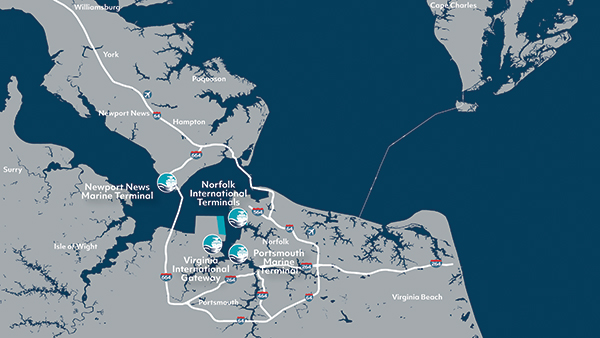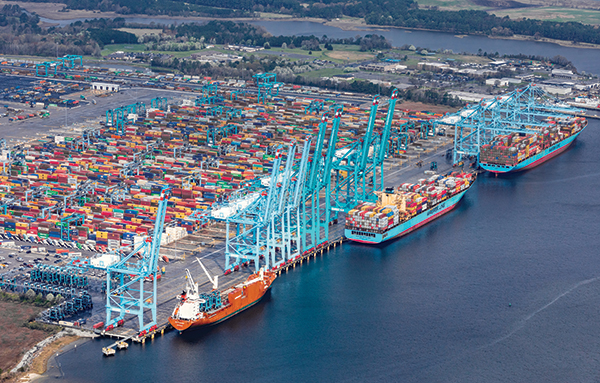If we took ports for granted before the pandemic — and, yes, many of us sort of did — well, we don’t anymore. Among the growing ranks of those who follow these things acutely are those who would say that that the embattled U.S. supply chain owes a solid to the Port of Virginia, which has run more smoothly and with fewer freeway-style pileups than some of its East Coast rivals.
“We had a record 2021,” says Port of Virginia CEO and Executive Director Stephen Edwards. “We handled 25% more business, and we handled it well.”
That same serene coastline that’s amenable to the ports and the Navy, to shipbuilding and repair and offshore wind industries, is one of three end points for high-speed commercial fiber cables that link North America to Europe, South America and soon, Africa. It’s an arrangement born largely of geography, as the other two transatlantic U.S. links are New York and Miami. Hampton Roads is right in the middle, a real good thing should something happen.
Economic development officials see these cables as leverageable assets.
“It helps us create an organic link on the other side of the Atlantic,” says Patrick Duhaney, city manager for Virginia Beach, the most populous city not only in Hampton Roads but in the state of Virginia.
“This cable gives us a starting point for conversation with folks in Spain,” Duhaney tells Site Selection. “In the past year,” he says, “we’ve gotten three Spanish companies to set up corporate headquarters here in Virginia Beach.”
A related, cross-jurisdictional plan for a 119-mile, 288-strand “fiber ring” has cemented a mold of cooperation among the cities of Chesapeake, Norfolk, Portsmouth, Suffolk and Virginia Beach. Their shared vision is to use high-speed data transfer to transform Coastal Virginia into one of the most innovative and connected regions in the nation.
“We agreed that we should come together to take advantage of these transatlantic pipes coming in,” says Susan Vitale, a Chesapeake City Council member and driving force behind the effort.
“Being the digital port of the Mid Atlantic, we decided that we would start with the five southside cities closest to the pipes to build the backbone of our fiber optic ring. That’s phase one, and then moving on to future phases we can expand the ring beyond that to our sister cities, both north and west of us on the peninsula. We’ll be setting ourselves up for a lot of opportunities.”
The Hampton Roads vision is all about opportunities. Keep an eye out. These folks are finding their way.


